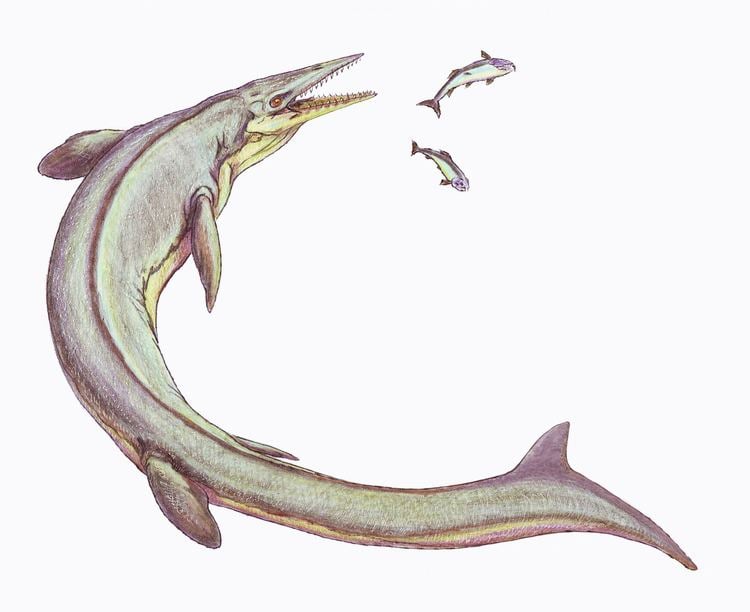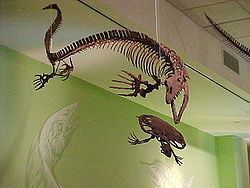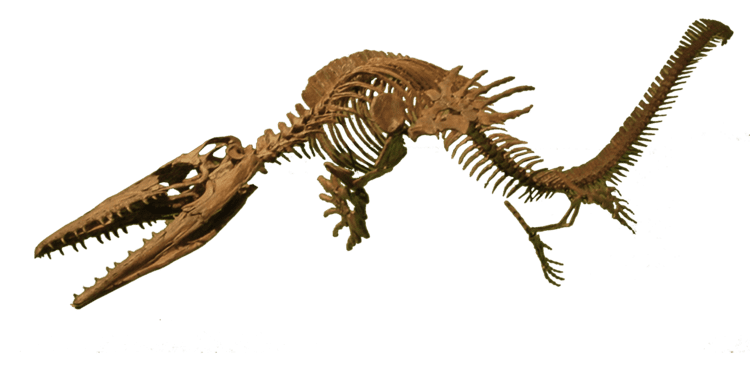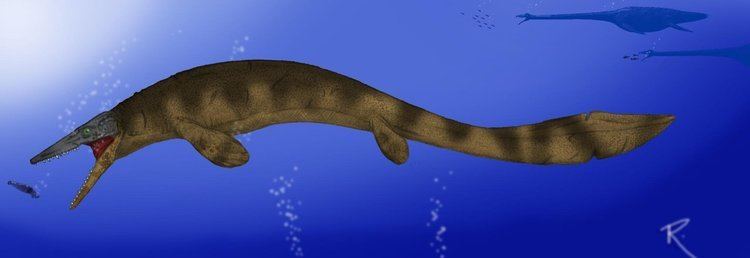Suborder Scleroglossa Phylum Chordata Order Scaled reptiles | Class Sauropsida Family Mosasauridae Tribe Mosasaurini Rank Genus | |
 | ||
Similar | ||
Tribute to clidastes
Clidastes is a genus of extinct mosasaurine lizard that lived during the Late Cretaceous Period from 99.6 million to 66 million years ago in North America, and Europe. Clidastes was an agile swimmer that probably swam by undulating its body, and preyed on cephalopods, fish and other small vertebrates in shallow water.
Contents
- Tribute to clidastes
- Clidastes liodontus
- Description
- Discovery
- Teeth and the Process of Tooth Replacement
- Classification
- References

Clidastes liodontus
Description

Clidastes was the one of the smallest of the mosasaurs (the smallest being Dallasaurus), averaging 2–4 meters (6.6–13.1 ft) in length, with the largest specimens reaching 6.2 meters (20 feet) long. The generic name refers to how the vertebral processes that allow the proximal heads of the vertebrae to interlock for stability and strength during swimming. Even though the vertebrae lock together, the living animal would have still had a range of motion in the horizontal plane that is sufficient enough to allow for the high quality of swimming in shallow waters. Additionally the strengthening of the tail, and entire backbone, allowed for muscle attachments to help it swimming. It possessed a delicate and slim form with an expansion of the neural spines and chevrons near the tip of the tail and this enabled it to chase down the fastest of prey.
Discovery

E. D. Cope discovered the first specimens of Clidastes propython in 1869 from the Mooreville Chalk in Lowndes County, Alabama. The remains unearthed were that of a juvenile but are one of the best preserved and most complete mosasaurs collected from the state and is regarded as the generic holotype of Clidastes. In 1918, Charles H. Sternberg and his son found additional remains of Clidastes in Kansas. They were surprised to see that it had humeri and femora with round heads, similar to that of mammals. Due to good preservation of the caudals, Sternberg noted that the chevrons along the vertebrae were ankylosed to the center, which is not observed in other mosasaurs. This synapamorphy was believed to aid in fitting the proximal heads snugly into the basins that hew out from the vertebrae almost locking them in place.
Teeth and the Process of Tooth Replacement

Mosasaur teeth are of rather uniform morphology with a pointed and curved tooth crown that sits on a pedicel composed of bone. The enamel surface is smooth and the crown is subdivided into a lingual and labial surface while the outer surface of the crown is made of enamel and the inner layer is made of dentine.
Fossil specimens show evidence of upright vertically positioned developing replacement teeth. Snakes have been thought of as the only squamates with replacement teeth that develop in a horizontal posteriorly inclined position. Snakes deviate from the usual varanoid pattern of tooth replacement, in that their replacement teeth develop in a horizontal inclined position and rotate, however snakes differ from Mosasaurs because they do not possess the resorption pits found in Mosasaurs.
Mosasaurs, including Clidastes, and snakes both share the traits of thecodont tooth implantation, and a recumbent position of replacement teeth. However mosasaurs develop replacement teeth by rotating within the resorption pits that are at the base of functional teeth. This is different from snakes because snakes have recumbent replacement teeth that lay horizontal and rotate into functional position when needed.
In mosasaurs like Clidastes, once the functional tooth is lost, a new tooth pedicel develops for the replacement tooth. In the case of mosasaurs though, they differ from the thecodont dentition pattern of archosaur and mammals because mosasaurs show true ankylosis and not a fibrous tooth attachment via periodontal ligament that’s usually found in mammals and archosaurs.
The marginal tooth rows in mosasauroids like Clidastes are found on the premaxilla, maxilla and the dentary. On the dorsal surface of the dentary there is an interdental ridge that separates successive teeth labially. These interdental ridges serve to separate succeeding teeth that grow upward between existing teeth.
Classification
Cladogram of mosasaurs and related taxa modified from Aaron R. H. Leblanc, Michael W. Caldwell and Nathalie Bardet, 2012:
